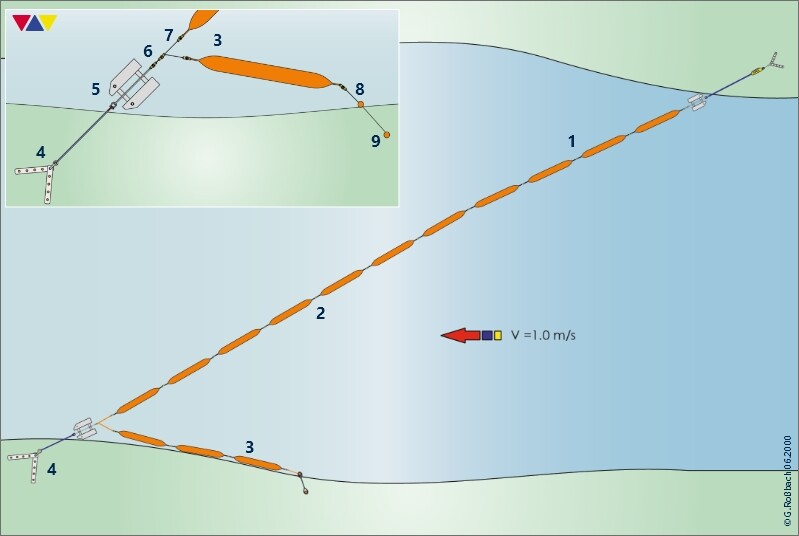Calculation principles in oil spill response
Quick and effective action is required to prevent the serious spread of pollutants that are hazardous to water. The choice and installation of the equipment is subject to important calculation principles.
After the disaster area and the existing operational conditions have been explored by the emergency response teams, a precise operational plan is drawn up, taking into account important parameters such as the width and depth of the watercourse, flow velocity, bank conditions and, last but not least, the amount of pollutants. In our application examples you can see how such a calculation can be set up. If you have any questions or uncertainties, please feel free to contact our trained staff or arrange a training session at your premises.
Application examples
Fast flowing waters

Use of the oil barrier type R 200 L
on the Danube
| Flow velocity V | 1,0 m/s |
| River width | 80 m |
| Angular position | 30° |
| Main barrier | 170 m |
| Bank protection barrier | 30 m |